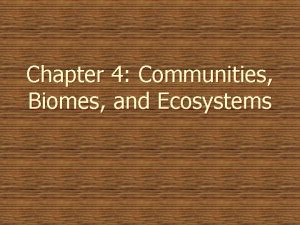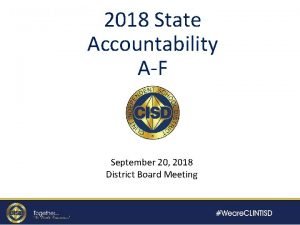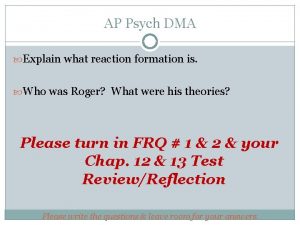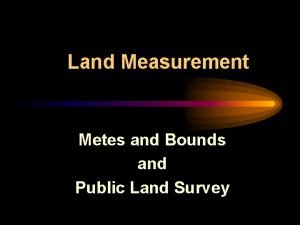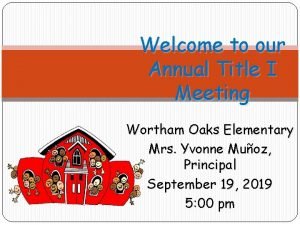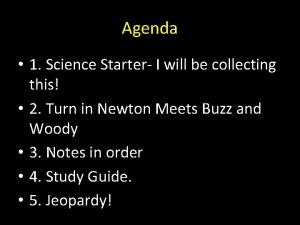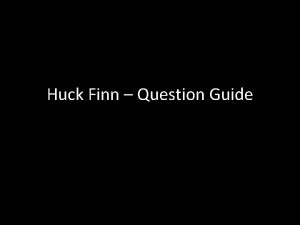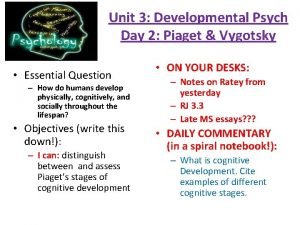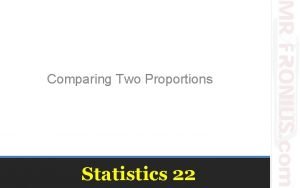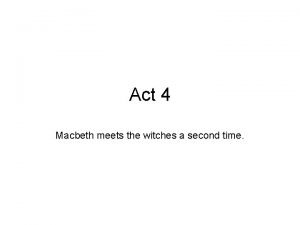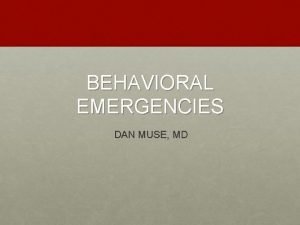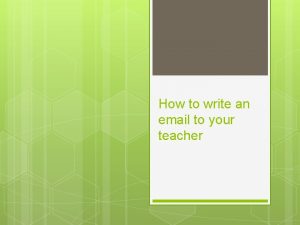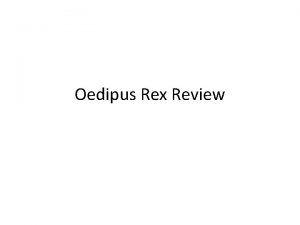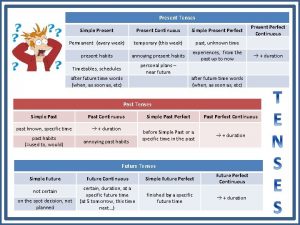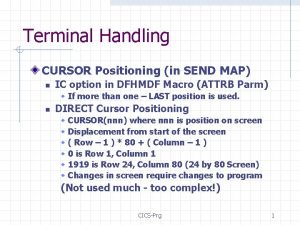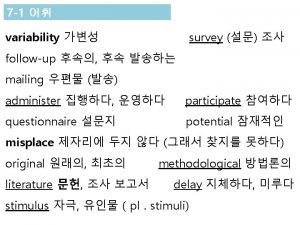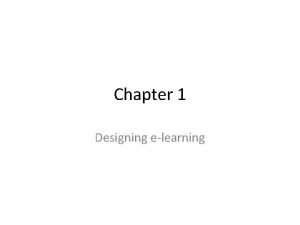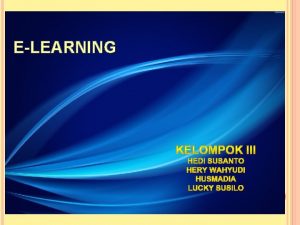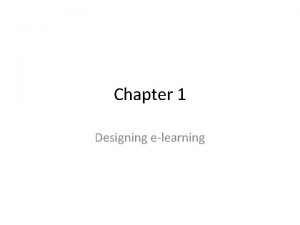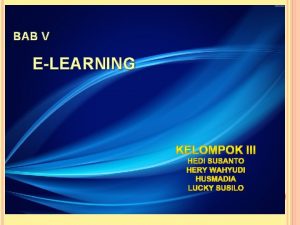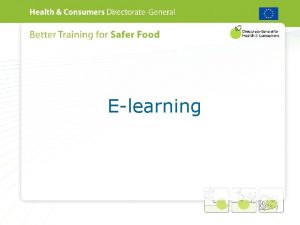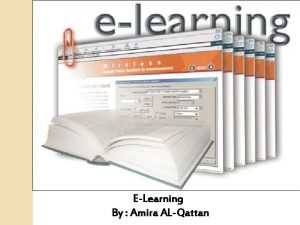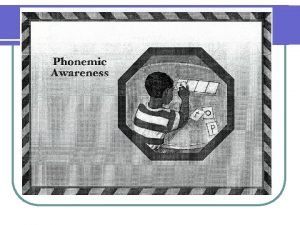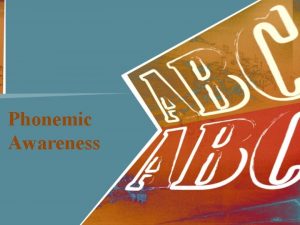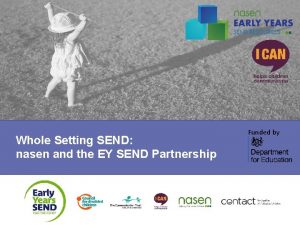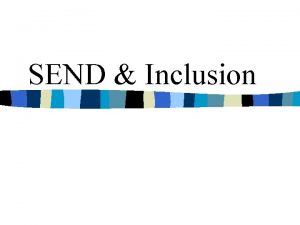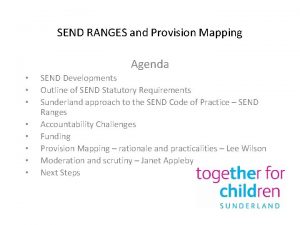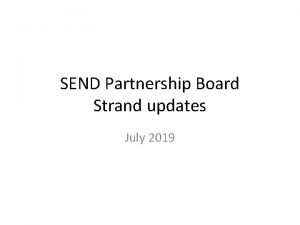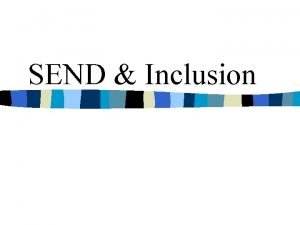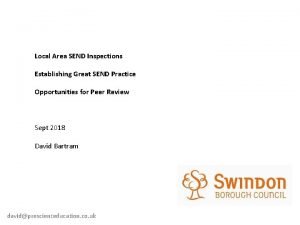SEND elearning awareness session This elearning session meets































- Slides: 31

SEND e-learning awareness session This e-learning session meets the training requirements and learning outcomes for SEND Tier 1 staff in the SEND Core skills training framework (CSTF) Duration 25 minutes START

Aim of learning session To provide a general awareness and introduction to the SEND legislation which includes the Children and Families Act 2014 plus guidance documents This is the induction level and is encompassed within the learning activities to help you understand the SEND Legislation. This session will support your knowledge regarding how children and young people with special educational needs and disabilities (SEND) should be supported NEXT

Core Competencies • Competence at this level is about all staff being aware of the key some processes and terminology relating to children and young people with Special Educational Needs or Disability (SEND), aged 0 -25 years. • Competence at this level is about individual practitioners having an awareness of how, within their role they can provide information or guide people to information about SEND and how they can help to meet the needs of this group of vulnerable children and young people. NEXT

Learning objectives Session overview – what you need to know • You will be able to demonstrate a basic awareness and understanding of SEND Legislation, Children and Families Act 2014, SEN Code of Practice and the Local Offer • You will be able to describe what an Education, Health Care (EHC) Needs Assessment and an EHC Plan (EHCP) is and how information about these and other SEND services can be found on the Local Offer • You will know where to find further information about Suffolk’s SEND Strategy and approach to key-working within Suffolk’s SEND Family Services NEXT

SEND - What you need to know and why it is important Where did it all start? Children and Families Act 2014 Part 3 – changed legislation relating to children and young people with special educational needs and disability (SEND). They were the biggest reforms in over 30 years. The SEND Code of Practice 2015 is statutory guidance for organisations that work with and support children and young people with special educational needs and disabilities. NEXT

Summary of the Children and Families Act 2014: The Legislation (Click here to reveal 5 key facts about the Act) Education, Health, and Care (EHC) Plans based on a single assessment process have replaced Statements of SEN. EHC plans identify the needs and support children and young people require to make progress towards agreed outcomes. They can be in place at anytime from birth to 25 Local services available to children, young people and families must be made available in a clear, easy to read manner. (Local Offer) Extends the rights to a personal budget for provision identified in an EHC Plan Local authorities must involve families, young people and children in discussions and decisions relating to their care and education; and provide impartial advice, support and mediation services. The commissioning and planning of services for children, young people and families will be run jointly by health services and local authorities. NEXT

Summary of the SEND Code of Practice (2015) The Statutory Guidance Children and young people who have special educational needs (SEN) may also have a disability under the Equality Act 2010. Disability is now identified alongside SEN (SEND) Health, Education, and Social care must work together to support children and young people with SEND Key-working is encouraged to offer a first point of contact to young people and families so guidance, information and support is more coordinated Local authorities needs to publish a Local Offer which provides information about support services and local opportunities for children and young people in one place SEND legislation covers children and young people from birth (0) up to 25 years old. From the age of 16 (completion of Year 11), young people can act on their own behalf. For some children and young people, appropriate support can be provided without an EHC Needs assessment or EHC Plan. Transitions need to be planned for at every stage and prioritised to include Preparing for Adulthood from age 14 years Plans should be person centred and co- produced with health, education, and social care input. Children, young people and parent/carers aspirations and views should be central to the process NEXT

The reason for the SEND legislation and guidance The SEND Legislation is intended to improve the long-term outcomes for children and young people with SEND Research has shown that children with SEND are ………… more likely to, live in poverty more likely to be socially isolated and victims of crime more likely to have mental health problems more likely to experience barriers to education, leisure, or play more likely to have additional physical health problems, such as being overweight/obese, have dental decay three times more likely to have no qualifications and much less likely to be in education, training, or employment when moving into adulthood NEXT

What is SEND? The term 'special educational needs' has a legal definition. A child or young person has SEN if they have a learning difficulty or disability that makes it harder for them to learn than most children of the same age. Many children will have special needs of some kind at some time during their education. SEN covers 4 main areas 1. communication and interaction 2. cognition and learning 3. social, emotional, and mental health 4. sensory and/or physical needs Definition of disability under the Equality Act 2010 You’re disabled under the Equality Act 2010 if you have a physical or mental impairment that has a ‘substantial’ and ‘longterm’ negative effect on your ability to do normal daily activities NEXT

The Suffolk SEND Strategy Suffolk’s response to the SEND legislation is set out in our. The aim is for children and young people with SEND and their families to have access to the information, services and support they need to enable them to achieve their potential. The Strategy has four key priorities Communicating the Local Offer The SEND Journey You can find out more about the Suffolk SEND Strategy here Developing services and provision Transitions and Moving into Adulthood NEXT

What is the Suffolk Local Offer? The website looks like this: The place to go for information and advice on services available for children and young people SEND in Suffolk. The information describes the support available to families and ALL children with SEN and /or Disabilities Click the icon below to view the website NEXT

The Education Health and Care (EHC) Needs Assessment and an EHC Plan Most children with SEND will not need an EHC Needs Assessment or EHC Plan but can be assessed and supported by education, care and health partners. In education, this is through SEN Support What is SEN support? An Education Health Care plan is a legal document that describes a child or young person's special educational, health and social care needs. It explains the extra help that will be given to meet those needs and is not otherwise available, and how that help will support the child or young person to achieve what they want to in their life. Find out about EHCP and how to request an assessment NEXT

The following people have a specific right to ask a local authority to conduct an education, health and care needs assessment for a child or young person aged between 0 and 25. • The child’s parent/carer • A young person over the age of 16 but under the age of 25 • A person acting on behalf of a school or post-16 institution (this should ideally be with the knowledge and agreement of the parent or young person where possible) • In addition, anyone else can bring a child or young person who has (or may have) SEN to the attention of the local authority, particularly where they think an EHC needs assessment may be necessary’ The Local Authority must make a decision within 6 weeks of the request being made. NEXT

If the Local Authority decide to carry out an assessment the following information and advice will be asked for. This must be provided within 6 weeks: • Information from families about child’s needs, and information from the child or young person themselves. • The Local Authority will ask education, health, and social care to be involved in the process of assessments. • Any reports from child’s or young person’s education provider. • Health assessments of the child or young person • Social care information and advice • Advice from an educational psychologist The local authority will tell the family or young person within 16 weeks whether an EHC plan is going to be issued. NEXT

The EHC Plan • The young person or family has the right to comment on the draft EHC Plan and request amendments when there is information and advice to support the changes. • The young person or family can express a preference for an education setting. The local authority must consider this request. • Once the final EHC Plan has been issued, this must be reviewed annually. Usually the education setting will arrange the annual review meeting and following the meeting, will submit a report to the local authority. • It is not expected that the EHC plan will be amended annually, but where the child or young person’s needs, the support they require or the education setting has or is changing, then the EHC plan will be amended. NEXT

KEY WORKING is providing a point of regular and consistent contact for children and young people with SEND and their families. The approach includes: Providing emotional and practical support as a part of a trusting relationship Providing information and access to specialist advice and support Coordinating practitioners and services around the child, young person and family NEXT

Key Working In Suffolk’s SEND Services The SEND Family Services Team, based in Inclusion Services lead on the support of children, young people and their families so that with the necessary skills, young people progress into adulthood to further achieve their hopes, dreams and ambitions. Fundamental to this is our joint partner commitment to the delivery of services through a key working approach. In some cases, young people and families have already established trusted relationships with practitioners from a range of services in Early Help, Social Care, Health and other organisations and we will work with these colleagues so they can continue to support the young person or family where it is appropriate to do so. NEXT

SEND FAMILY SERVICES ARE COMMITTED TO: Creating trusting relationships with children, young people and families by delivering what they agree to do. Promoting an environment where the person receiving a service feels able to discuss any areas of concern / issues and be confident that appropriate action will take place as necessary. Following through issues to a resolution, without passing off the concern to someone else Building effective communication and relationships with professionals, practitioners and education settings Being transparent and honest in the message they are delivering to young people and families, and have a clear overview of the processes and complexities of service delivery Being fully supported in challenging where needed so that they are effective advocates for children, young people and families NEXT

START

QUESTION 1 Why are outcomes important for children/ young people with SEND? Outcomes can only be achieved if the young person has an EHCp in place Focus on outcomes will help children/ young people with SEND to have improved achievements, to be able to take up employment and live independent lives Outcomes are only important if this is what professionals advise Outcomes should only be focused on education NEXT

QUESTION 2 What does the term special educational needs mean? The term 'special educational needs' has a legal definition. A child or young person has SEN if they have a learning difficulty or disability that makes it harder for them to learn than most children of the same age. Many children will have special needs of some kind at some time during their education. SEN means you need an EHCP If you have English as a second language you have SEN means you have a physical disability NEXT

QUESTION 3 SEN covers 4 main areas – what are they? (Select one of the 2 options below) Communication and interaction Learning Difficulties Behaviour and social interaction Sensory and/or physical needs Communication and interaction Cognition and learning Social, emotional, and mental health Sensory and/or physical needs NEXT

QUESTION 4 What is the definition of disability? You’re disabled under the Equality Act 2010 if you have a physical impairment which requires you to use a wheel chair You’re disabled under the Equality Act 2010 if you have a physical or mental impairment that means you are unable to work You’re disabled under the Equality Act 2010 if you have a physical or mental impairment that has a ‘substantial’ and ‘long-term’ negative effect on your ability to do normal daily activities You’re disabled under the Equality Act 2010 if you have a physical or mental impairment that means you require additional help NEXT

QUESTION 5 Which year did the Children and Families Act come into force? 2013 2014 2015 NEXT

QUESTION 6 What is Suffolk Local Offer and where can it be found? A directory of all services provided by Suffolk County Council, available from Suffolk County Council offices Clear information about local services and support available to children, young people and families on Suffolk’s Local Offer website. NEXT

QUESTION 7 What are the key priority areas in Suffolk’s SEND Strategy 2017 to 2020? The SEND Journey Developing Services and provision There are four priorities: Communicating the Local Offer The SEND Journey Developing Services and provision Transitions and moving into adulthood NEXT

QUESTION 8 What is an Education, Health Care Plan? An EHCP is what you need if you have SEN Same as old statement of SEN An EHCP comes with funding for schools An Education Health Care plan is a legal document that describes a child/ young person's special educational, health and social care needs. It describes the extra help required to meet those needs NEXT

QUESTION 9 Who can apply for an Education, Health Care Needs Assessment? Parent/carer Young person Schools Professionals All A parent or carer can request Local Authority to carry out an assessment. A young person can request an assessment themselves if they’re aged 16 to 25. A request can also be made by anyone else who thinks an assessment may be necessary, including doctors, health visitors, teachers, and family friends NEXT

QUESTION 10 If an EHC Needs Assessment is agreed, information and advice must be provided by all those who is it requested from in how many weeks? Four Six Eight Ten NEXT

QUESTION 11 What is a Key Working? A key worker is the only person who can help children with SEND A key worker is a qualified professional You must have a key worker to get an EHCP assessment Providing a point of regular and consistent contact for children and young people with SEND and their families. providing a point of regular and consistent contact for children and young people with SEND and their families. NEXT

Congratulations! You have now completed the SEND e-learning awareness session Have a look at the SEND Learning and Development Programme to find information about further learning resources and training opportunities ESC to Exit
 Privacy awareness and hipaa awareness training cvs
Privacy awareness and hipaa awareness training cvs Awareness session invitation
Awareness session invitation Narrow band where the ocean meets land
Narrow band where the ocean meets land Jarda meets petra
Jarda meets petra Approaches meets masters
Approaches meets masters Fresh water meets salt water
Fresh water meets salt water Approaches meets masters
Approaches meets masters Achille et briseis
Achille et briseis Where tradition meets tomorrow
Where tradition meets tomorrow Jack and jill psychosexual fixation
Jack and jill psychosexual fixation Business intelligence in higher education
Business intelligence in higher education Metes and bounds
Metes and bounds Limnetic zone
Limnetic zone Great gatsby chapter 1 summary
Great gatsby chapter 1 summary Approaches meets masters
Approaches meets masters A rule of nature that sums up related observations
A rule of nature that sums up related observations Generally restful like the horizon
Generally restful like the horizon Ingredients of art
Ingredients of art Academia meets industry
Academia meets industry Newton meets buzz and woody
Newton meets buzz and woody Huck meets the duke and the king questions and answers
Huck meets the duke and the king questions and answers Congress of vienna meets
Congress of vienna meets Piaget meets santa
Piaget meets santa Where today meets tomorrow
Where today meets tomorrow La belle dame sans merci conclusion
La belle dame sans merci conclusion Proportions
Proportions Macbeth meets the witches
Macbeth meets the witches Muse 2 episode 2 every behavior meets a need
Muse 2 episode 2 every behavior meets a need How to write a good email to teacher
How to write a good email to teacher Why did oedipus leave corinth
Why did oedipus leave corinth Present wish examples
Present wish examples Exec cics handle condition
Exec cics handle condition


